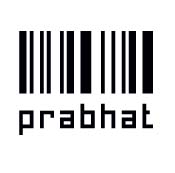Mobile Connectivity Methods/Technologies
While an acronym sometimes is techno babble the layperson needn’t master, others are important for everyday cell phone understanding.
Though the jargon 1G, 2G, 2.5 and 4G might not have ever popped into your head, 3G very likely has given today’s emphasis on high-speed data usage from your mobile phone.
But what’s different between these technologies and how do they impact you? This article will help you understand the differences between 1G vs. 2G vs. 2.5G vs. 3G vs. 4G.
Though the jargon 1G, 2G, 2.5 and 4G might not have ever popped into your head, 3G very likely has given today’s emphasis on high-speed data usage from your mobile phone.
But what’s different between these technologies and how do they impact you? This article will help you understand the differences between 1G vs. 2G vs. 2.5G vs. 3G vs. 4G.
What is 1G:
Remember analog “brick phones” and “bag phones” way, way back in the day? Cell phones began with 1G. First 1G service was based on a TDM voice infrastructure -- built around class x switches and 64 kbps slots. It had data, but circuit switched over a 64Kpbs voice bearer.
Now 2G (The Present World?):
Remember analog “brick phones” and “bag phones” way, way back in the day? Cell phones began with 1G. First 1G service was based on a TDM voice infrastructure -- built around class x switches and 64 kbps slots. It had data, but circuit switched over a 64Kpbs voice bearer.
Now 2G (The Present World?):
Second Generation (2G) Cell Phones received their first major upgrade when they went from 1G to 2G. This leap effectively took cell phones from analog to digital. 2G service had the same switched TDM backbone, but added a true Data Bearer and a digital voice bearer. Data rates were still limited to the max 64kbps of a single time slot.
2.5G added a packet bearer to the mix, still limited to 64kbps slots. Before making the major leap from 2G to 3G wireless networks, the lesser-known 2.5G was an interim standard that bridged the gap.
Now 3G:
2.5G added a packet bearer to the mix, still limited to 64kbps slots. Before making the major leap from 2G to 3G wireless networks, the lesser-known 2.5G was an interim standard that bridged the gap.
Now 3G:
Following 2.5G, 3G ushered in faster data-transmission speeds so you could use your cell phone in more data-demanding ways. This has meant streaming video (i.e. movie trailers and television), audio and much more. Cell phone companies today are spending a lot of money to brand to you the importance of their 3G network. Starting with BSNL in India starting in India for giving 3G over mobile is a good move.
Third generation (3G) changed the backbone slightly to allow a full T1 or E1 or J1 to be consumed by a data sub-scriber, but is still based on an ISDN style backbone. Sure you have packet switched data, but its carried over a traditional TDM backbone. There still a circuit voice backbone and while the data rates are high enough for VoIP, the latency of the data service is to great to base all of the "bearer services" on it, so you still have circuit voice, circuit data and packet data bearers.
Next 4G:
No technology would be complete without a looming upgrade for tomorrow. What’s on the horizon for 4G, what improvements will it bring “beyond 3G” and when might we expect 4G to go live? Finally, 4G systems will utilize a packet infrastructure rather than a traditional telephone architecture. Services will be horizontally layered on top of a proper low latency, QoS enabled packet switch (read IP) infrastructure. Gone will be the circuit voice and circuit data bearers.
No technology would be complete without a looming upgrade for tomorrow. What’s on the horizon for 4G, what improvements will it bring “beyond 3G” and when might we expect 4G to go live? Finally, 4G systems will utilize a packet infrastructure rather than a traditional telephone architecture. Services will be horizontally layered on top of a proper low latency, QoS enabled packet switch (read IP) infrastructure. Gone will be the circuit voice and circuit data bearers.
Now when 4G is starting its rays in USA we need to see when we will get this in country like India.
So "G" has more to do with the infra-structure and less to do with the data rates. The data rates over the air are driven by the organization of the infrastructure and other than that have little to do with what generation they are.
So "G" has more to do with the infra-structure and less to do with the data rates. The data rates over the air are driven by the organization of the infrastructure and other than that have little to do with what generation they are.





0 comments:
Post a Comment